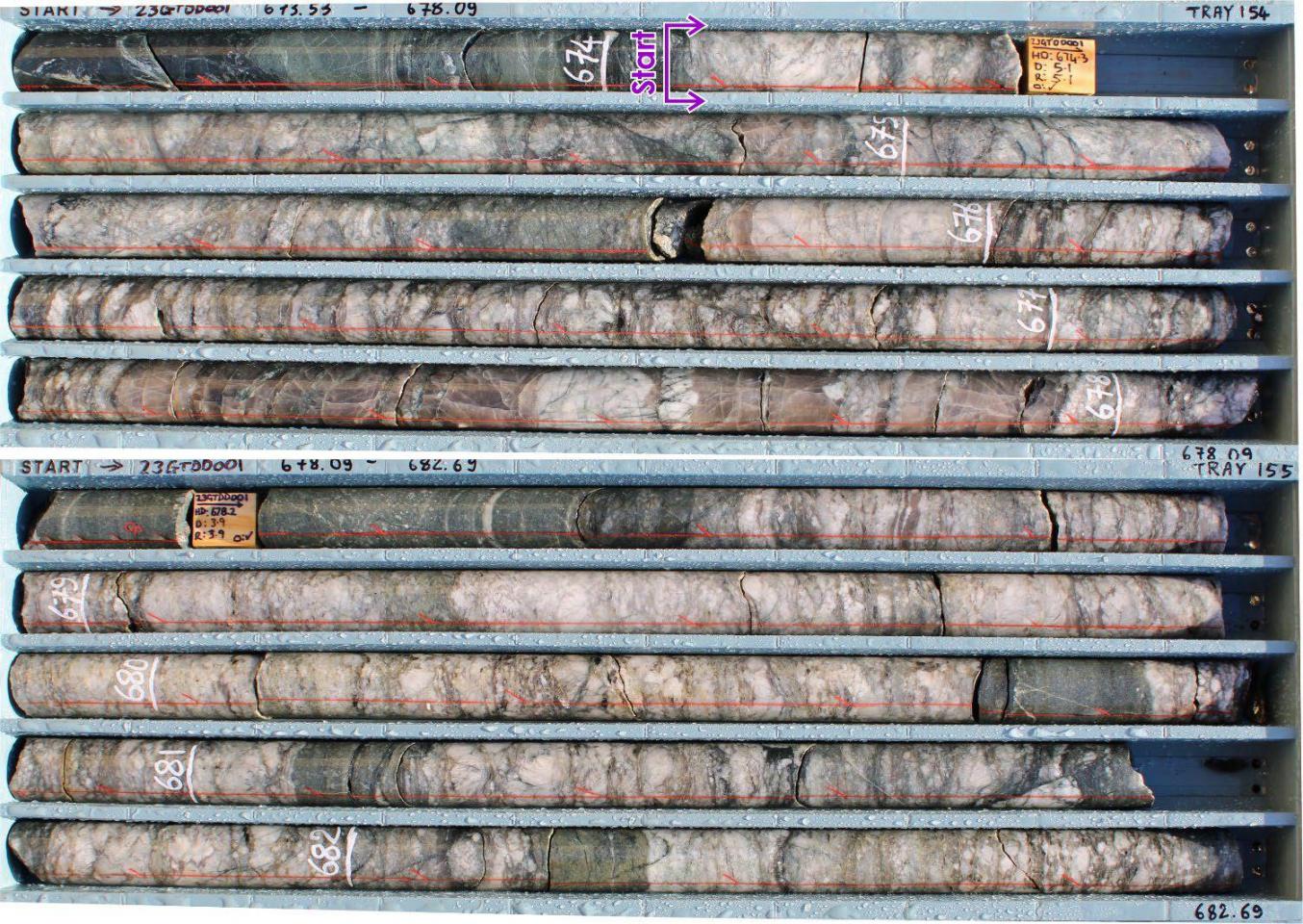GreenTech Metals has revealed West Pilbara pegmatite intersections up to 24.6m thick in a maiden diamond drillhole that reached down to 810.2m at its Osborne joint venture lithium project … with more holes still to come. The company believes its highlight hit from 674m downhole could represent a down-dip extension of a mapped pegmatite at surface.

GreenTech Metals has revealed West Pilbara pegmatite intersections up to 24.6m thick in a maiden diamond drillhole that reached down to 810.2m at its Osborne joint venture (JV) lithium project … with more holes still to come.
The company believes its highlight hit from 674m downhole at the Western Australian project it shares with Artemis Resources could represent a 550m-deep down-dip extension of a mapped pegmatite at surface.
The promising revelation comes as drilling of a second hole at Osborne continues, while core from the first hole is still being logged, cut, sampled and made ready for laboratory submission later in the week. The second hole is testing a separate part of the southern pegmatite zone in a thicker area of the Wally trend, about 350m east of the first hole.
The JV – which sees GreenTech holding a 51 per cent share and Artemis with the remaining 49 per cent – kicked off the 1500m program earlier this month. The Osborne exploration licence adjoins the eastern side of Greentech’s 100 per cent-owned Ruth Well deposit.
The object of the drilling is to gather stratigraphic and structural information in heritage-cleared areas of the southern pegmatite zone, which sits in the south-western corner of the Osborne JV ground.
GreenTech Metals executive director Tom Reddicliffe said: “We are pleased that our drilling program is on track and that preliminary drill core observations, coupled with the surface rock chip lithium oxide grades and the scale of the Kobe and Osborne zones, support our view that this is a large lithium mineralising event. We are continuing with the current exploratory drillhole program along with testing mineralised zones where intersected, which we expect to be completed this year.”
Reddicliffe said a targeted and more detailed program of drilling within the JV’s broader Osborne and Kobe zones would kick off in the new year, following its interpretation of results from the current program.
The pegmatites in the southern zone are designated lithium-caesium-tantalum (LCT) types based on GreenTech’s reviews of historic geochemical data and its own geological mapping and rock-chip sampling, which retuned assays running up to 3.63 per cent lithium oxide.
googletag.cmd.push(function() { googletag.display('bn-dfp-article-lb2-advert'); });GreenTech says its reviews, reconnaissance mapping and sampling has significantly expanded the extent of lithium mineralisation in the southern LCT-pegmatite zone, which at this stage appears to be to least 4km long, with an east-west strike.
The work has also demonstrated an extension of a northern LCT-pegmatite zone out to an east-west striking zone about 6km long. The zone sits largely in its Ruth Well licence, but appears to extend into the north-western corner of the Osborne JV, which adjoins the Ruth Well ground at that point.
GreenTech says it also plans to include two stratigraphic holes from its more northern Kobe zone in the current program and already has approved programs of work and heritage clearances in hand.
There are many exploration programs that employ too much non-core drilling before finally committing to diamond-drill core to see what is really going on at depth. Understandably, cost is often the key hurdle in any reluctance to move to the ultimate rotary lie detector.
But Greentech and Artemis appear to be going the right way about things at Osborne – getting a handle on the basic stratigraphy and structural controls early before returning to reverse-circulation (RC) drilling for the initial area coverage. That strategy is especially important in getting to grips with the typical complexity of pegmatite swarms.
Is your ASX-listed company doing something interesting? Contact: matt.birney@businessnews.com.au
















